Small dining room mirror ideas – 10 ways mirrors can make a big impact
Lost your appetite for eating in cramped conditions? It’s time you looked into the light-bouncing, space-boosting benefits of mirrors
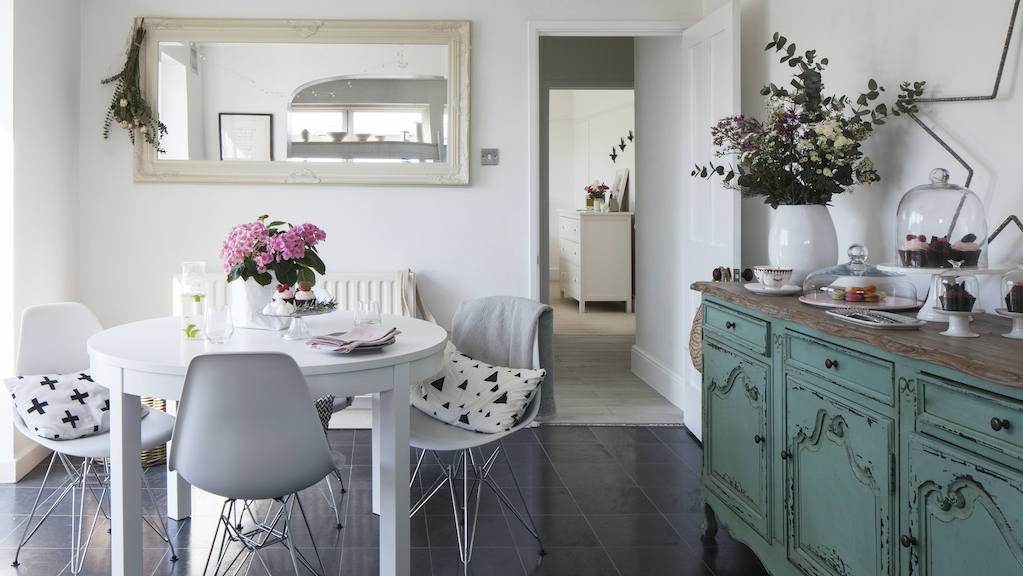

When you’re dining in a confined space, it’s essential to harness all the best space-boosting small dining room ideas, and small dining room mirror ideas should be at the very top of your hit list.
It is no secret that mirrors are one of the most effective design tools in the battle to maximise the sense of space and light in any bijou setting. Pint-sized dining rooms are no exception.
Used in the right way – by paying careful attention to scale, proportions, window locations and frame design – mirrors have the power to transform the potential of even the smallest residential eateries. Read on to discover why a mirror could be your most rewarding small dining room purchase.
Small dining room mirror ideas
Whatever the size, shape or frame design of your mirror, if you plan to hang it on the wall, do make sure you can achieve a secure fix. Plaster and drywall are not strong enough to support heavy wall mirrors. Check your planned location will allow you to screw into the wooden support frames behind. Wall plugs, available from £5 for a set at Amazon, are your friend when it comes to safely installed mirrors.
1. Reflect the light (fitting)
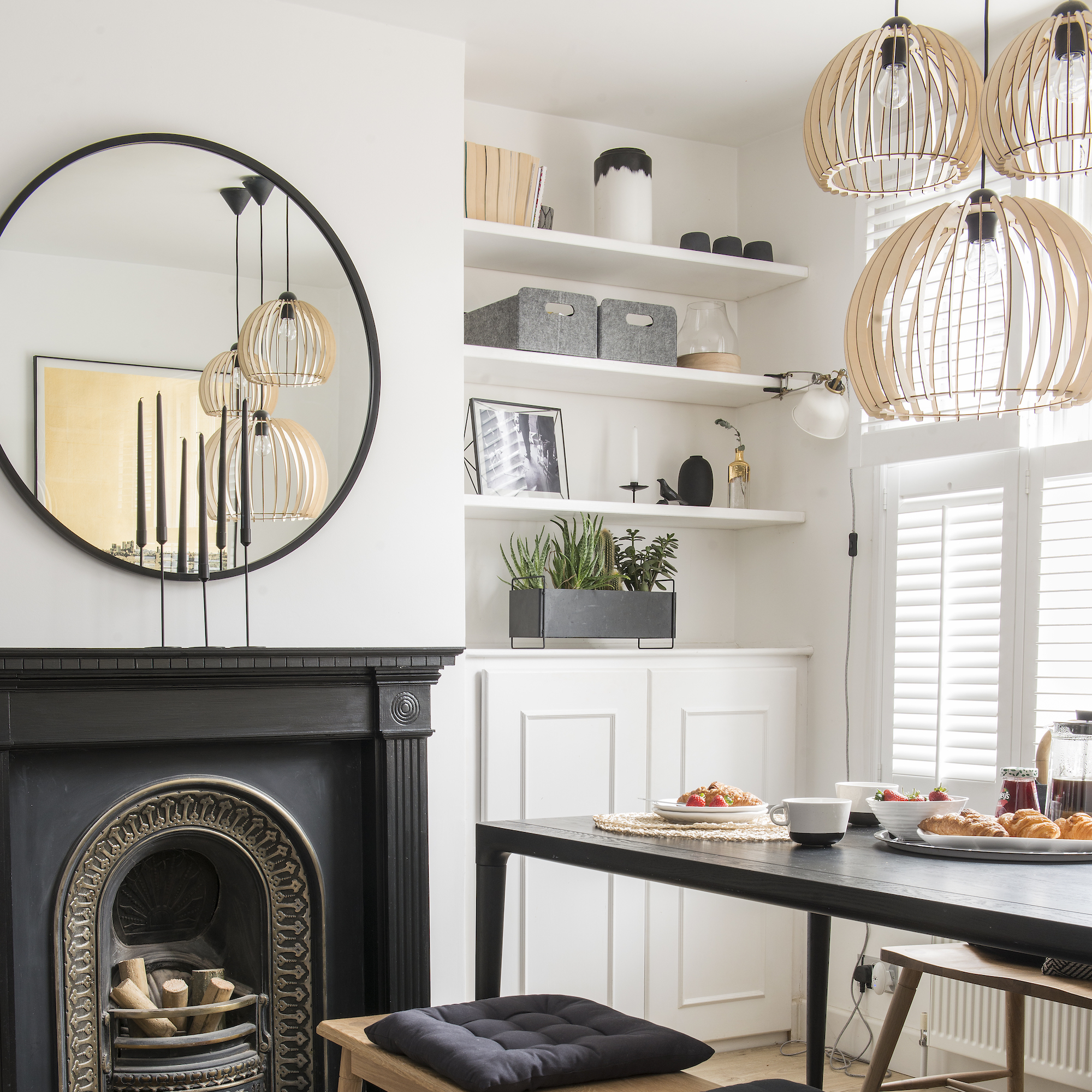
It’s not just the mirror you need to consider when decorating a small space, dining room lighting ideas will also play a pivotal role. ‘Traditionally, mirrors are hung on the wall above a mantelpiece or at head height and this rule still works well today,’ explains Lucy St George, co-founder of Rockett St George.
‘Do remember a mirror at this height will reflect the chandelier or ceiling light you have chosen for the centre of the dining room and create a gorgeous feature of the reflection. So, make sure you opt for a light with wow-factor as the reflection in the mirror means you will now see two of them,’ Lucy adds. Also, take into account the glare of an un-shaded/excessively bright light bulb, or it won’t just be your scintillating conversation that dazzles guests!
2. Find the perfect frame
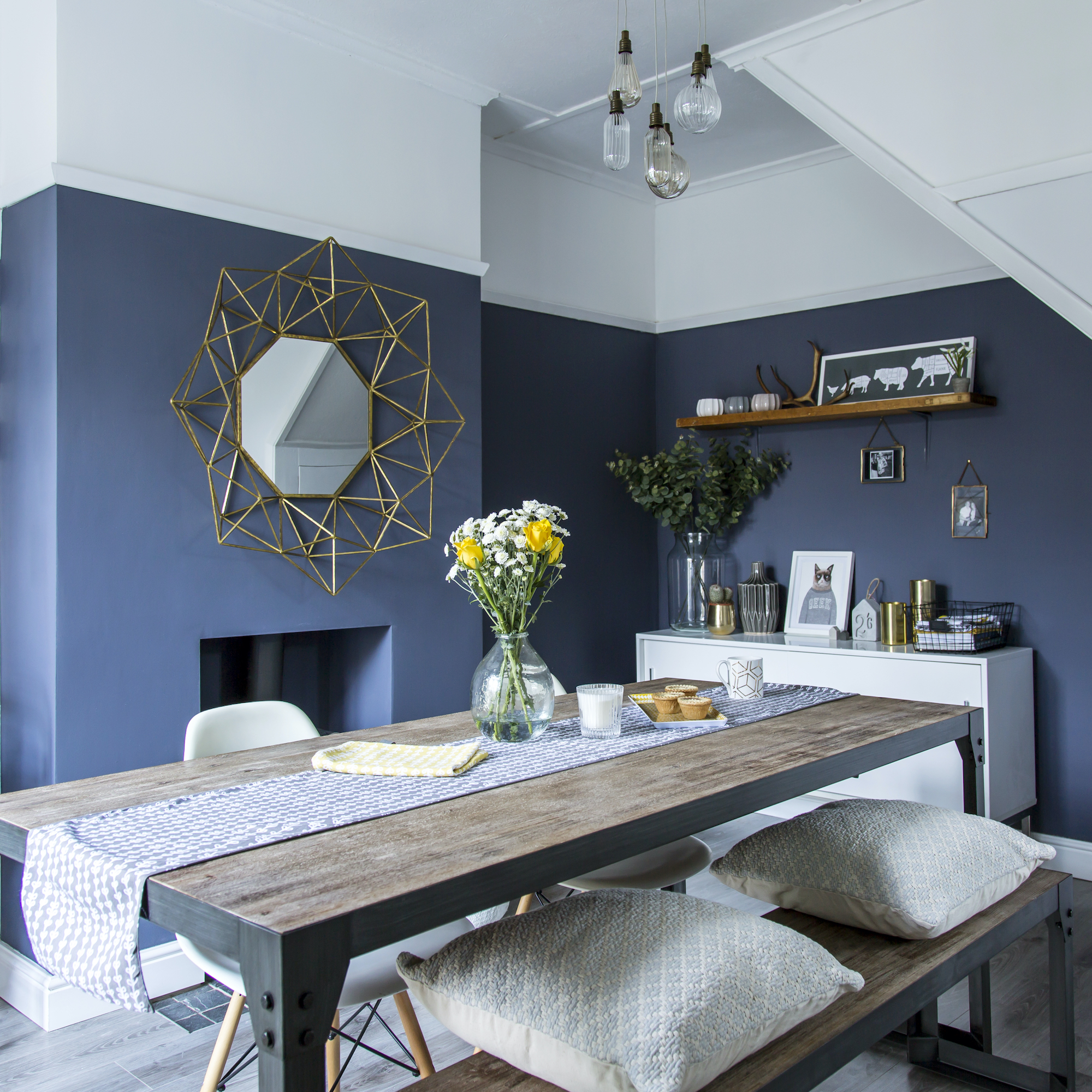
As in any room, the design of the mirror’s frame can be used to complement the aesthetic of your entire dining room. In traditional homes, an ornate, gilded frame will add grandeur, while more modern dining room ideas such as industrial décor suits a crisp Crittall-inspired frame.
Get the Ideal Home Newsletter
Sign up to our newsletter for style and decor inspiration, house makeovers, project advice and more.
When dealing with a space-starved dining room, it helps to consider visual weight. A generously chunky mirror frame could be overpowering, and loom over the dining table. Instead, seek out mirrors with fine frames. This unusual example provides plenty of decorative interest, without dominating the room.
3. Choose foxed glass
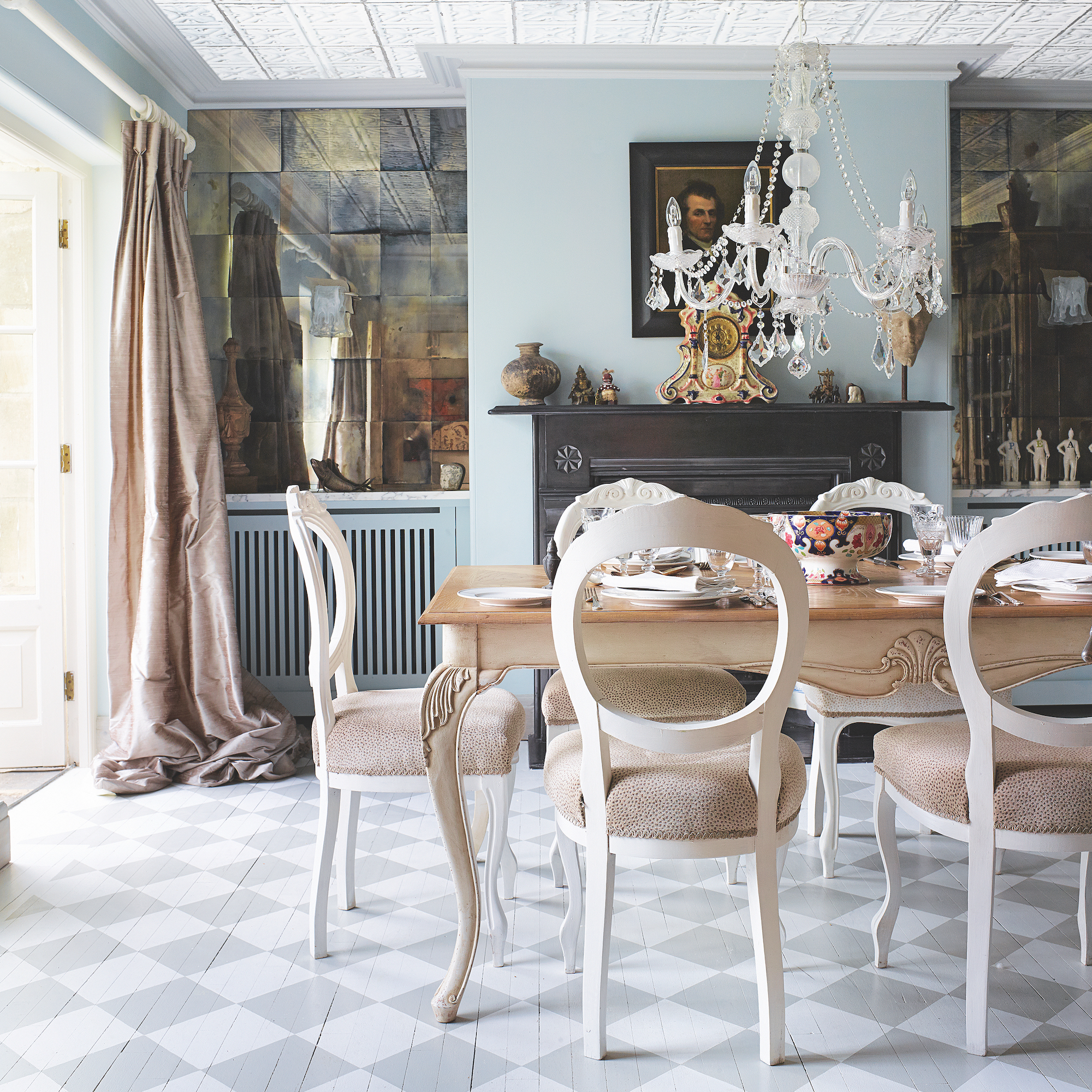
Using mirrored glass in dining room alcoves is a classic way to create the impression of depth – as if you are peeking into the next room. Take it right up to the ceiling to really boost that ‘hall of mirrors’ space-boosting illusion.
Using foxed or antiqued mirrored glass brings all the benefits of light-bouncing spaciousness but is a touch more sophisticated. A diffused reflection can also be preferable when using mirror in such large volumes. Few people enjoy watching themselves eating!
‘Antiqued mirror gives a much more subtle and soft look in a small space compared to a stark plain mirror. You still get all the reflected light, but it has character and a feeling of warmth,’ enthuses bespoke mirror specialist Rupert Bevan. ‘When considering antiqued mirror options, look for a supplier that does hand silvering and antiquing. The effect is more organic, with not one panel the same.’
4. Work those curves
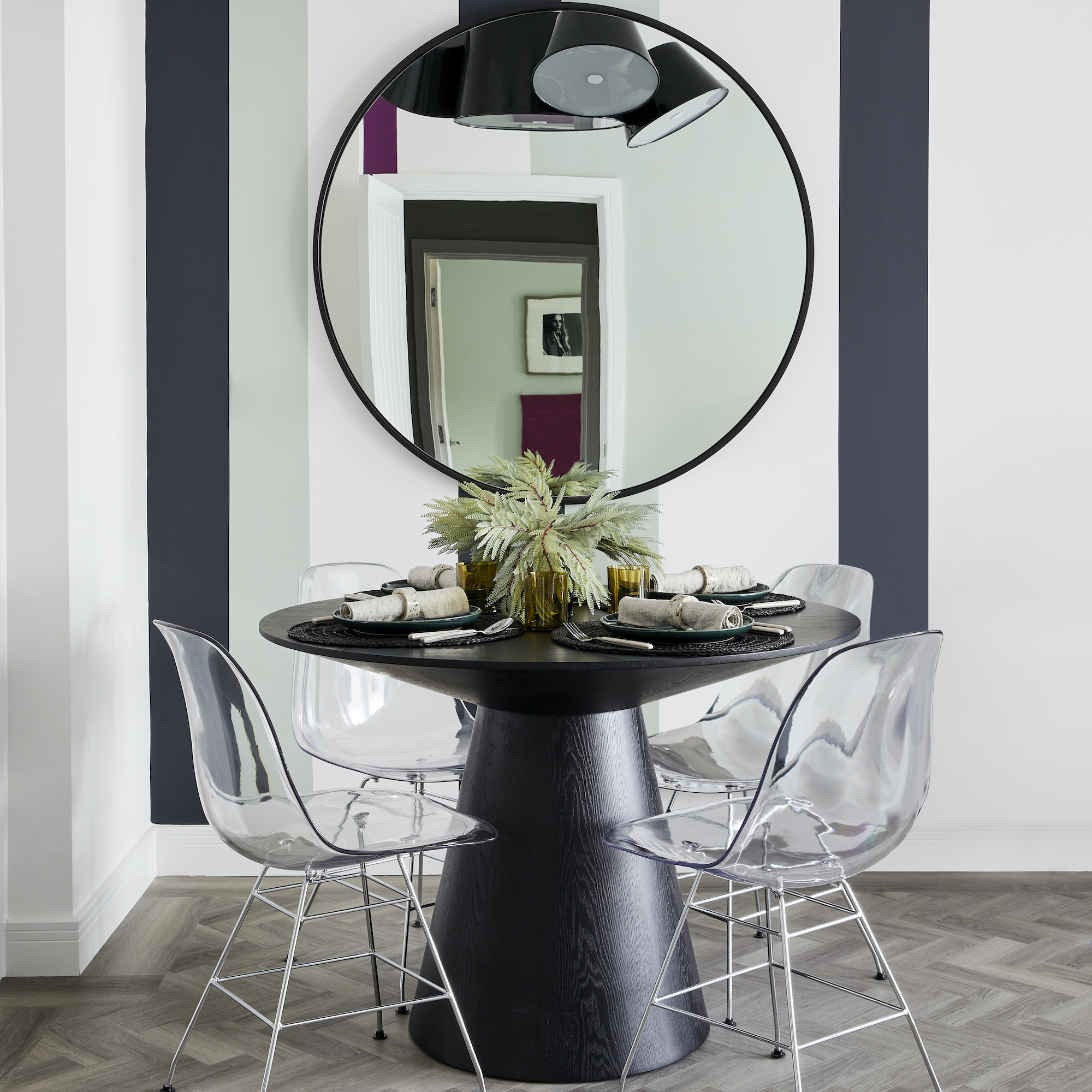
Curves have an instant softening effect and can really transform the sense of spaciousness, especially if your dining set-up is tucked into a corner. Ramp up the impact by going outsized with a circular mirror; a really big design will bring ALL the drama to your dining room wall décor ideas.
Positioning a generously curved mirror above a smaller, curved dining table is a clever way to echo the shape and play with scale, thus securing the mirror as the focal point in the room.
5. Use multiple mirrors
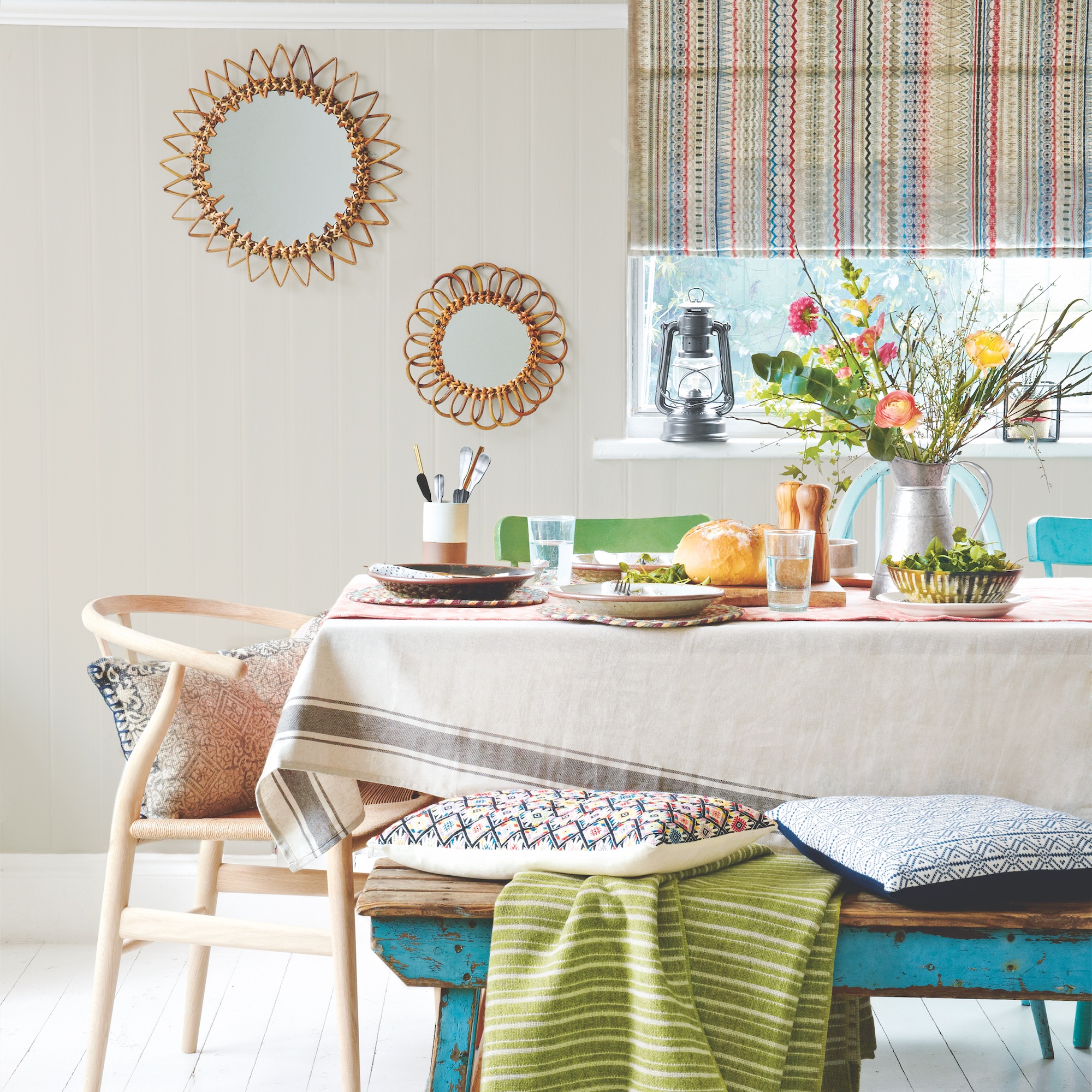
‘In a small dining room we often recommend small decorative mirrors, perhaps a collection grouped together on a wall or using mirror-backed candle sconces as additional lighting,’ says interior designer Kate Guinness. ‘You then get all the benefits of the twinkle and light-reflection without something dominating the room.’
Create a smart dining room wall decor idea by hanging a group of mirrors in a similar way to a picture gallery, paying attention to proportion and the distance between each mirror. Positioning two or three mirrors with interesting frames off-set to the dining table can feel more modern than centring on the wall.
6. Highlight a focal point
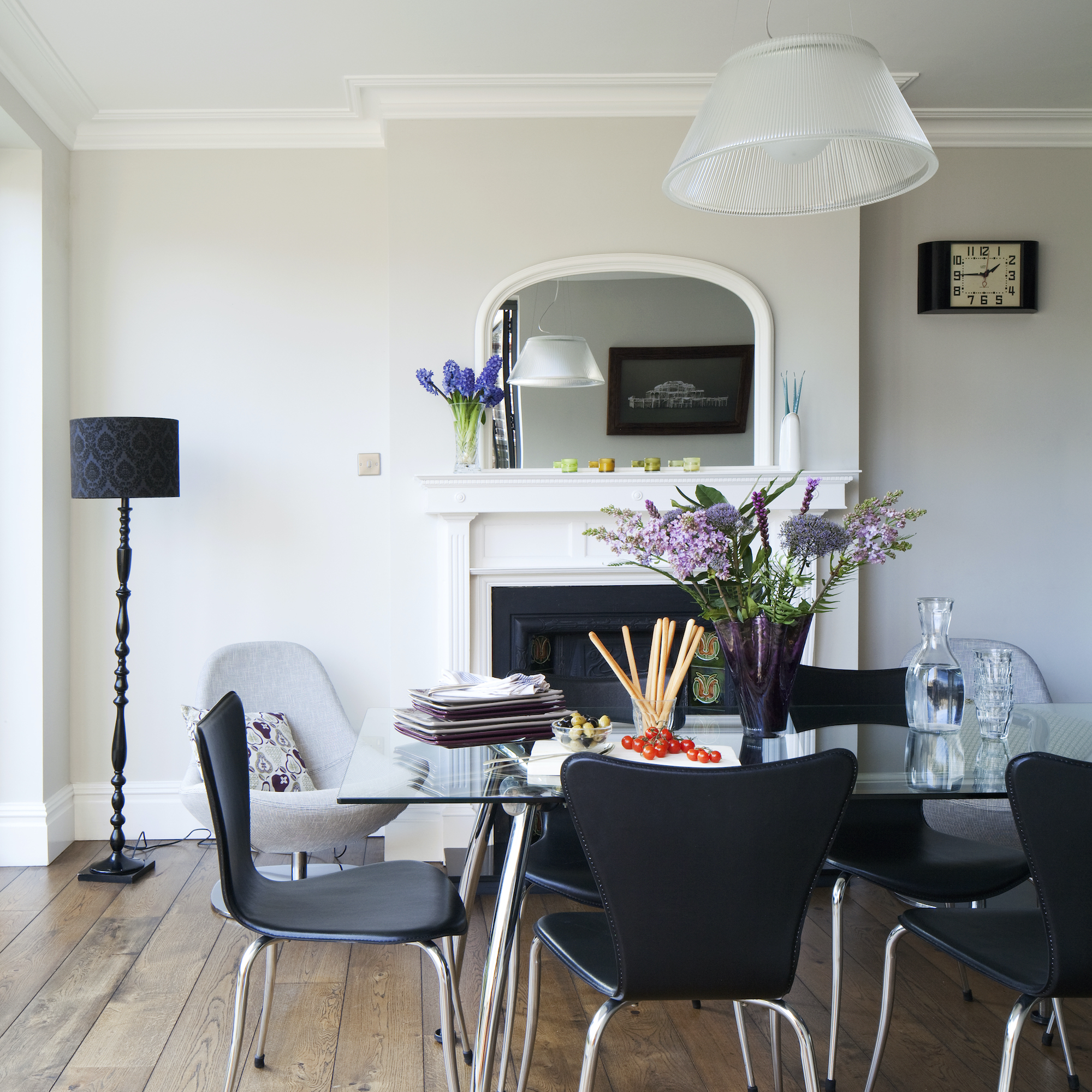
Above the fireplace is prime mirror hanging territory and can help ensure an attractive fireplace doesn’t get lost behind the table in a small dining room.
Hanging the mirror on the wall above the mantlepiece will allow more space for displaying candlesticks and trailing foliage etc. Aim for a gap of around 10-12cm between the bottom of the mirror frame and mantle. Resting the mirror on the mantlepiece lends a more relaxed vibe but be sure to attach the mirror firmly to the wall for safety.
7. Lift low ceilings
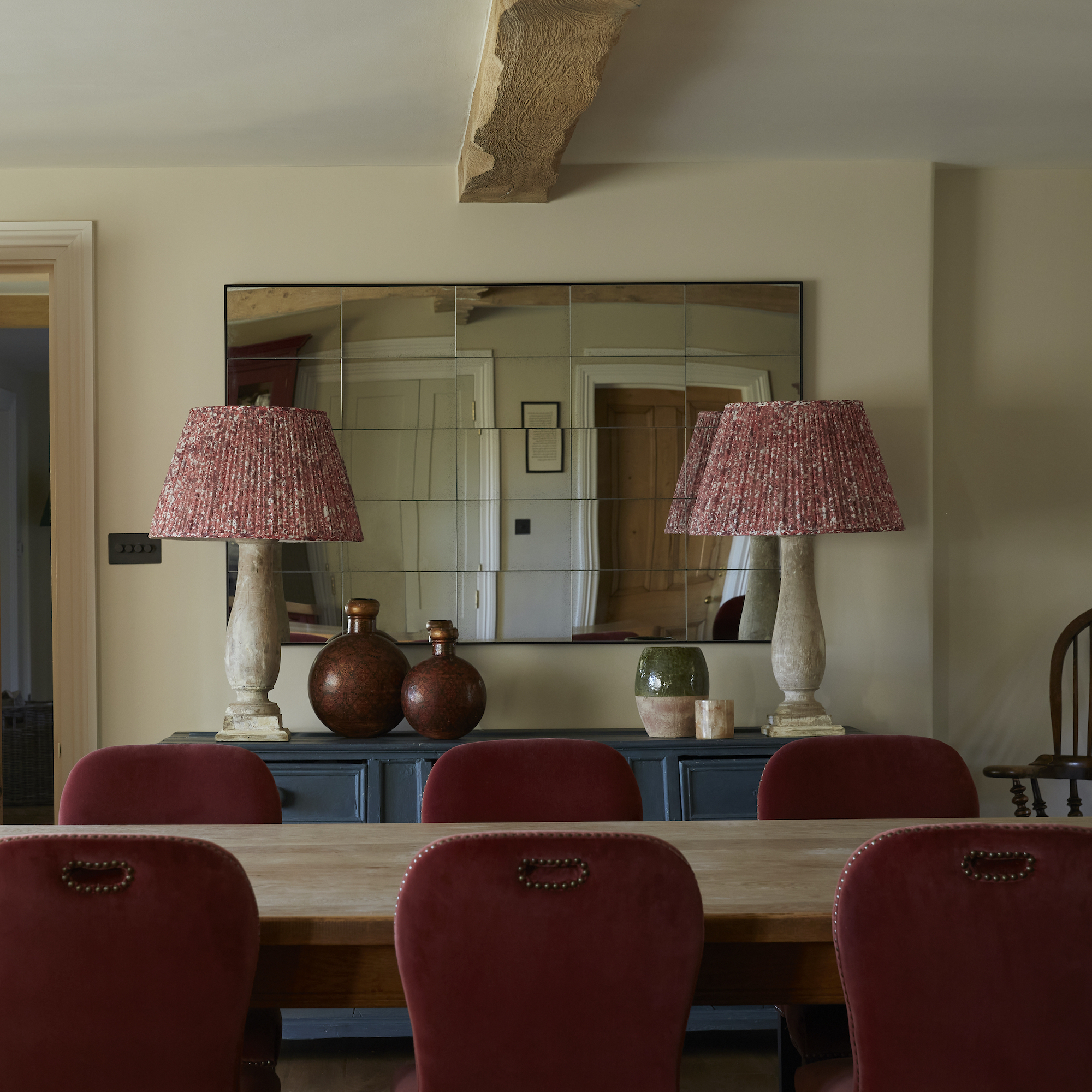
In small dining rooms that lack height as well as width, make a strategically placed mirror your go-to space-enhancing solution. ‘If the ceiling is very low, perhaps in a traditional cottage for example, then I would opt for a fairly large mirror,’ recommends Ciara Ephson, founder of Fentiman Design. A trio of tall, slim mirrors can also have a wall-lengthening effect.
‘Position the mirror on the wall so that you are able to comfortably look into it when standing but give it enough breathing space at the top so as not to feel squashed against the ceiling. Like artwork, people often fall into the trap of hanging mirrors too high,’ Ciara adds.
8. Source elegant shapes
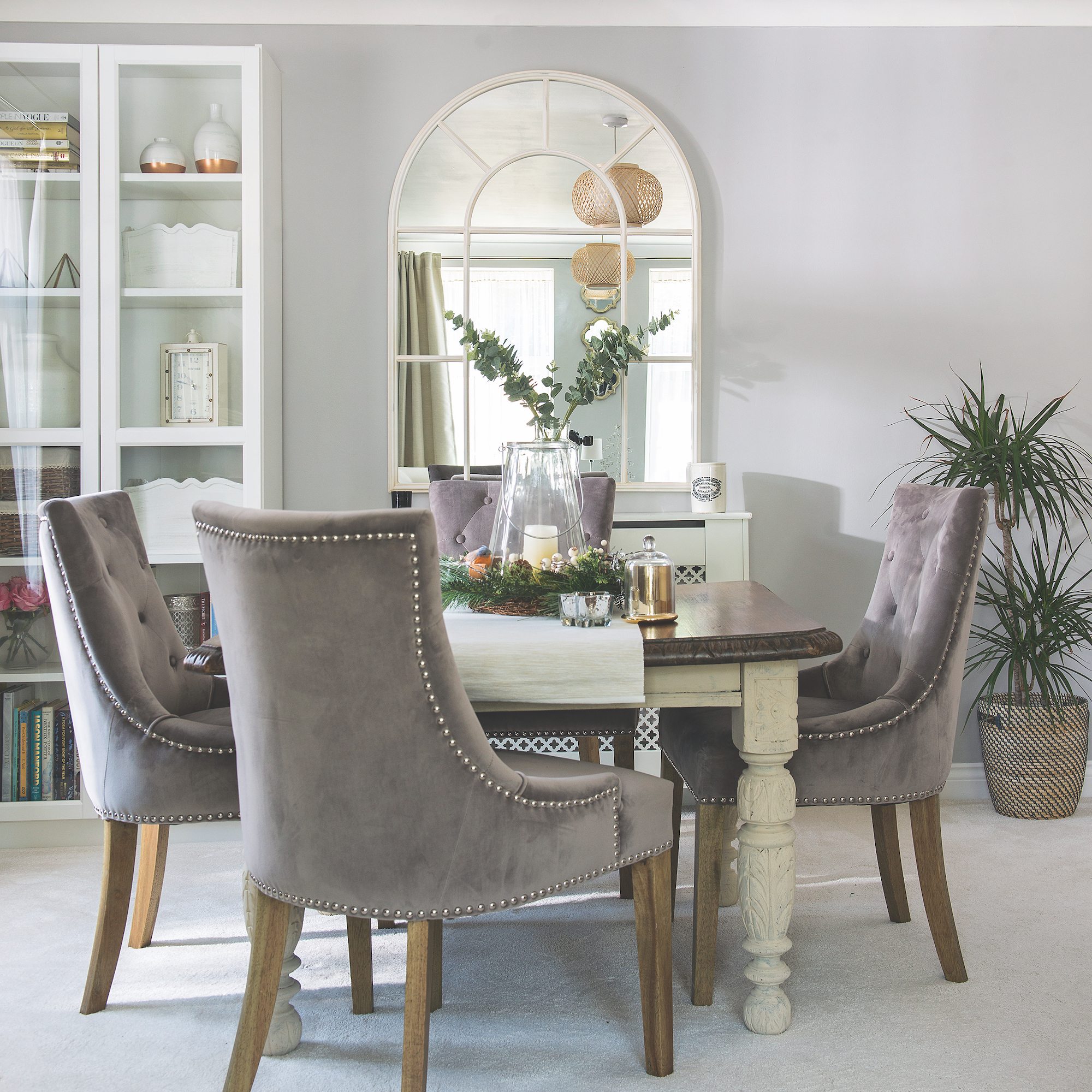
Mirrors come in all shapes and sizes, from tall window-style arches to starbursts and scalloped designs. Obviously personal choice plays a huge part in narrowing down your options but, says Noor Charchafchi of Celine Interior Design, oval mirrors are a great choice for smaller dining spaces.
‘They offer a sense of elegance and with that comes the illusion of size,’ Noor explains. ‘I would veer away from overly decorative mirrors or mirrors that are too wedded to a particular style or era, so avoiding heavier Art Deco looks for example, as I think the focus then becomes the mirror which distracts from the rest of the room.’
9. Expand your horizons
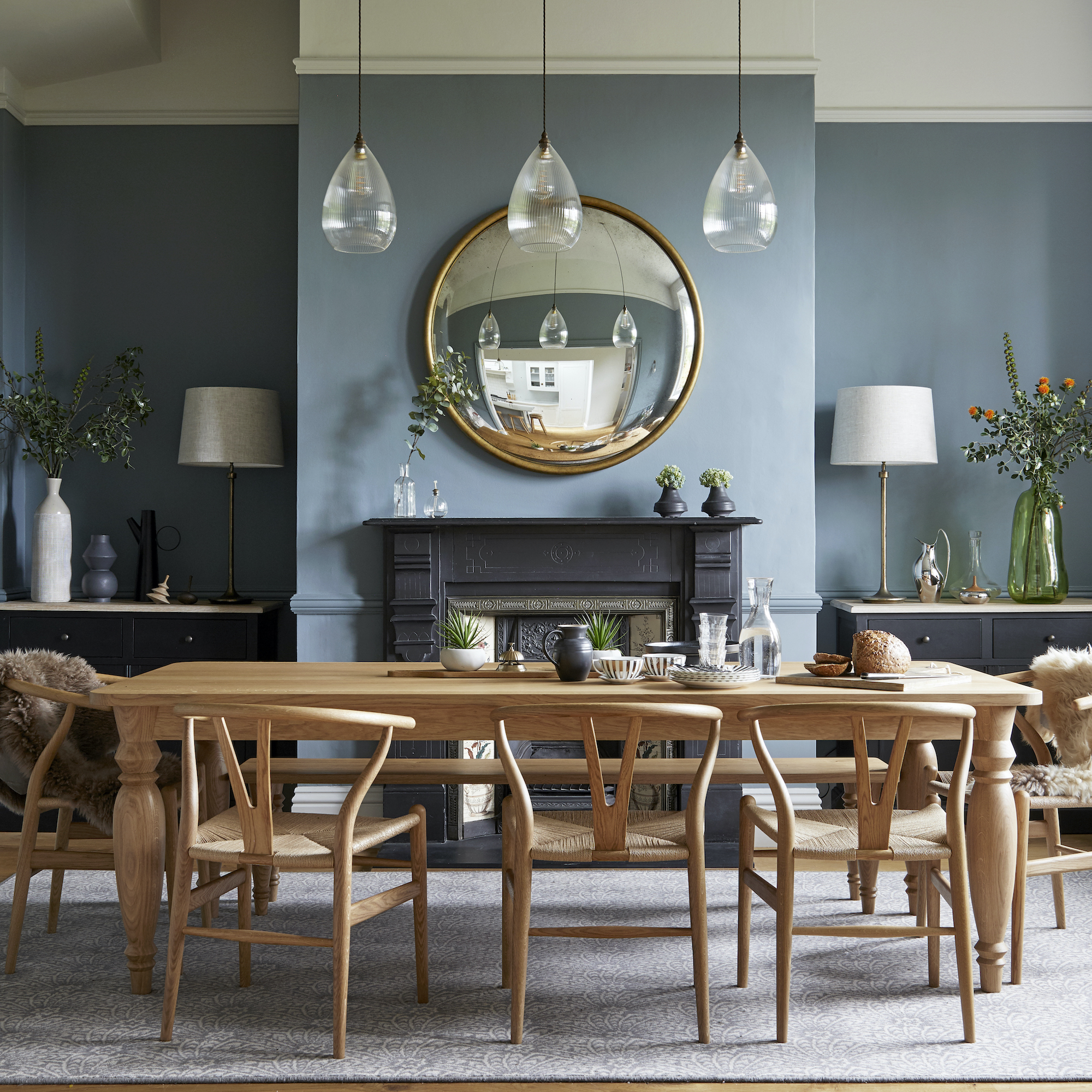
While flat mirrors have long been recognised for their potential to open a space up, convex mirrors do the same, but on steroids! A convex mirror may be pretty useless for applying lippy or shaving, but its small dining room super-power lies in its ability to draw the entire room into its curves.
Convex glass essentially reflects a much wider field of vision, allowing you to see every inch in one glance. The bigger the diameter of your convex mirror, the more it will visually expand the room from all angles.
10. Take it to the floor
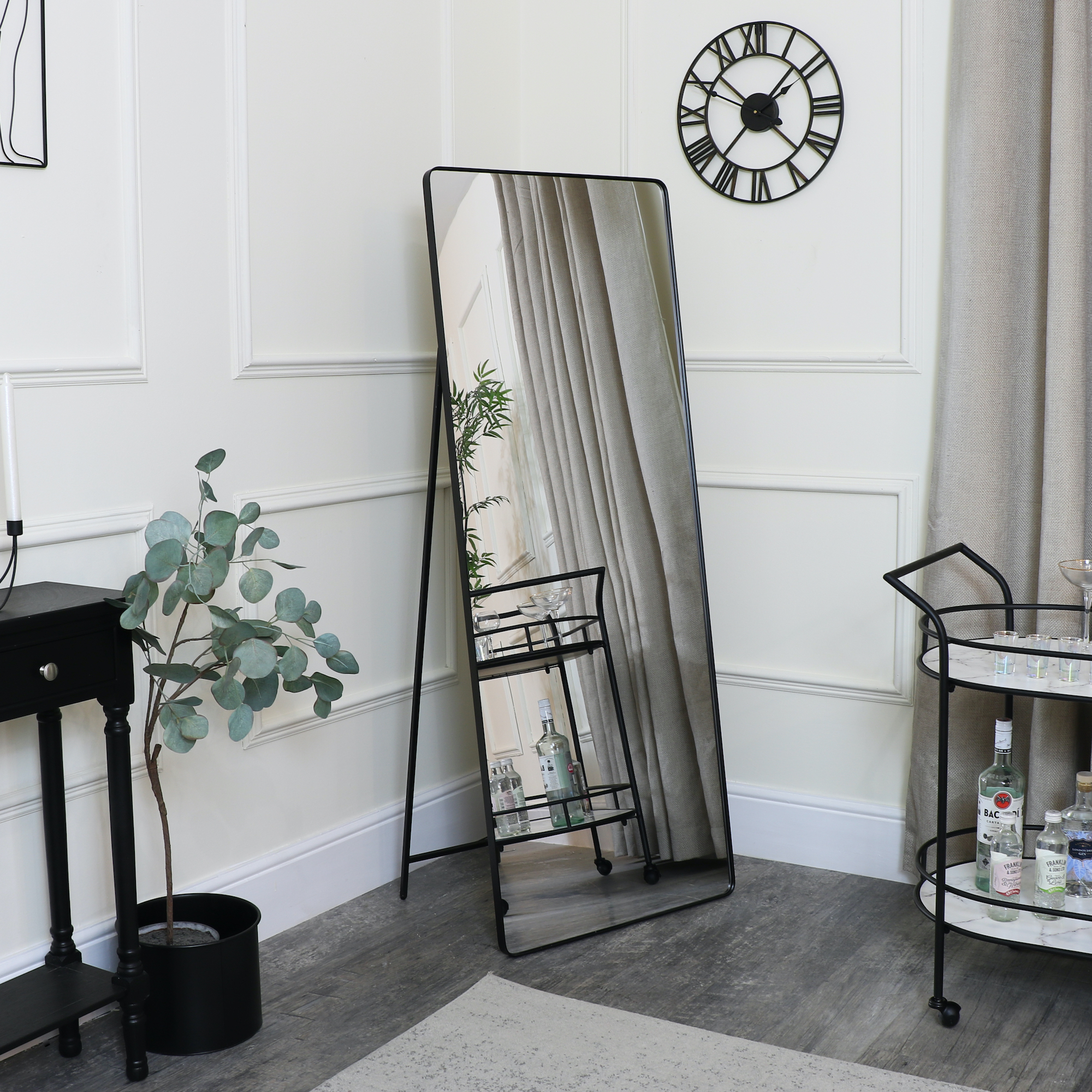
Use a floor-standing mirror to bring much needed light into the corners of a small dining room and enjoy a more expansive environment. Leaning an oversized ornate mirror against the wall behind your dining table will also bounce light back into the room and create a fabulous focal point in a small space.
If you’re concerned about young children running into a floor-standing mirror, pop a small side table or planter in front. Mirrors labelled ‘leaner’ mirrors don’t need to be anchored to the wall but do be careful when using on slippery flooring, like laminate. Rubber matting or drawer liner can be used to add grip.
Where should a mirror be placed in a small dining room?
If you are seeking to reflect daylight into a small dining room, and you should be, then start by thinking about which direction the windows face and what time of day you most often use the room. In a North-facing room, you can usually position mirror on the opposite wall to windows without risk of being dazzled. But in a South-facing dining room, it’s often better to position mirrors on walls adjacent to the window wall.
Do test the mirror out before hanging to check for glare. Also avoid hanging two mirrors directly opposite each other as the resulting infinity-mirror effect can be quite disconcerting.
As mirrors in small dining rooms are generally more decorative than practical – they’re not used for hair styling or teeth brushing – it is less important to concern yourself with hanging them at a comfortable height for viewing your reflection. Instead, place the mirror(s) where they will reflect a statement feature, such as a chandelier, or above a focal point, like a sideboard or a modern fireplace idea. Always avoid placing a mirror at seated level, it’s too distracting when you’re eating.
What size mirror should go in a dining room?
There are no firm or fast rules when it comes to choosing the best mirror size for a dining room. ‘Why not create a feature on dining room walls with mix and match vintage, foxed or antiqued mirrors in a variety of sizes for a unique take on the timeless gallery wall trend?' suggests Lucy St George, co-founder of Rockett St George.
For a more formal approach, a popular rule of thumb is to choose a mirror that is approximately two thirds of the size of whatever it is hanging above, be that a side table, dining table or fireplace. Leave enough space above and below to allow the wall room to breathe and frame the mirror in position.

Linda Clayton is a professionally trained journalist, and has specialised in product design, interiors and fitness for more than two decades. Linda has written for a wide range of publications, from the Daily Telegraph and Guardian to Homes & Gardens and Livingetc. She has been freelancing for Ideal Home Magazine since 2008, covering design trends, home makeovers, product reviews and much more.
-
 The pink Ninja air fryer of our dreams has arrived, but only in the US
The pink Ninja air fryer of our dreams has arrived, but only in the USNinja's spring colours collection i the US has sparked some serious appliance envy
By Molly Cleary
-
 3 humane methods to stop squirrels eating your plants, according to garden experts
3 humane methods to stop squirrels eating your plants, according to garden expertsStop squirrels from munching on your plants with these three humane methods
By Kezia Reynolds
-
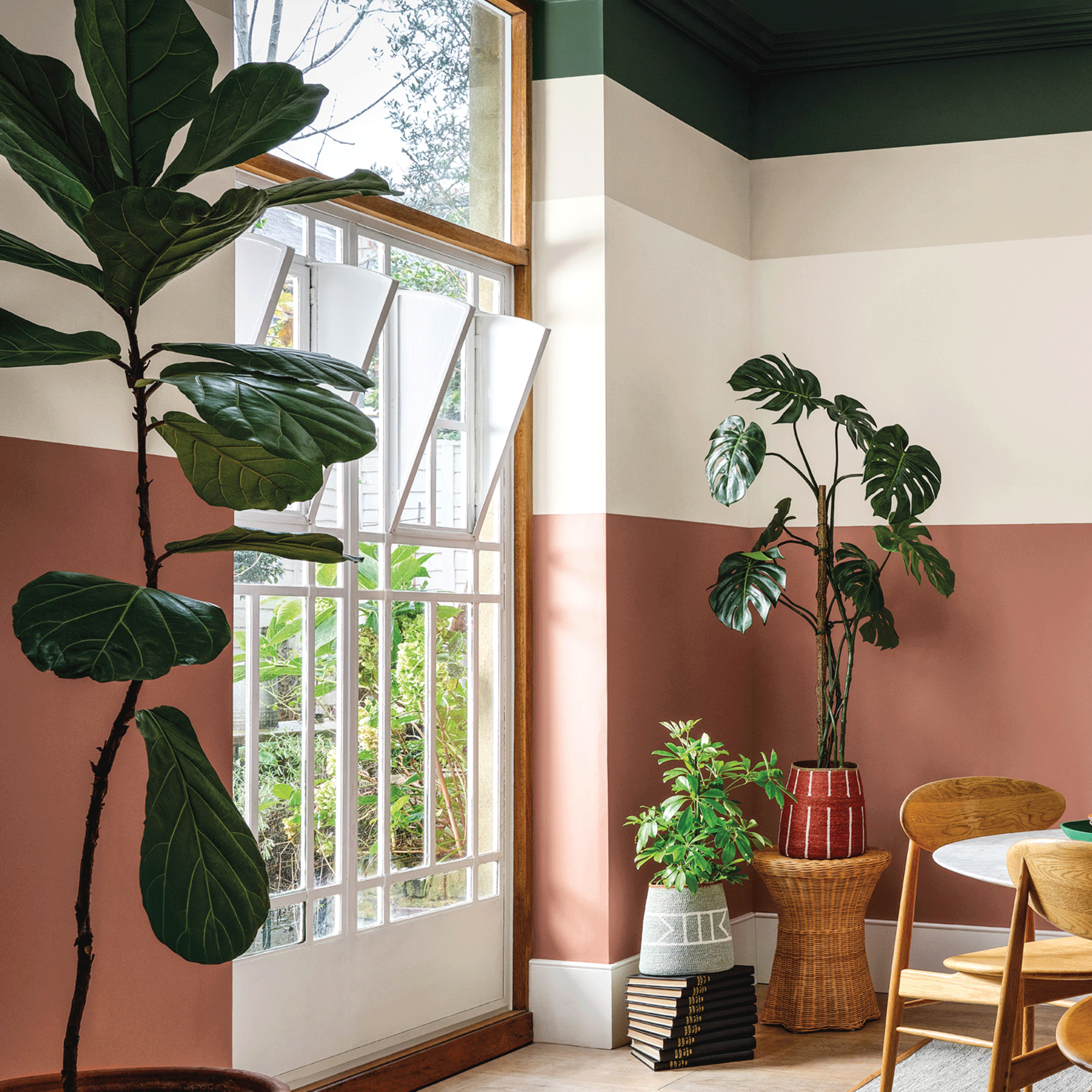 Crown Paint has launched new wall colours for the first time in three years, and changed how I think about neutral shades
Crown Paint has launched new wall colours for the first time in three years, and changed how I think about neutral shadesIs terracotta the ultimate neutral?
By Rebecca Knight